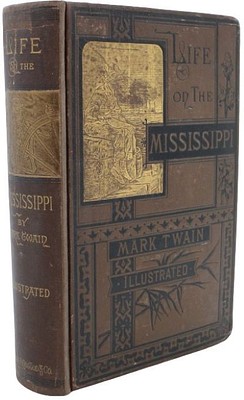Preble, Esek Hopkins, Commander American Navy 1775
About Seller
522 South Pineapple Avenue
Sarasota, FL 34236
United States
Sarasota Estate Auction specializes in a wide variety of furniture, antiques, fine art, lighting, sculptures, and collectibles. Andrew Ford, owner and operator of the company, has a passion for finding the best pieces of art and antiques and sharing those finds with the Gulf Coast of Florida.
Two ways to bid:
- Leave a max absentee bid and the platform will bid on your behalf up to your maximum bid during the live auction.
- Bid live during the auction and your bids will be submitted real-time to the auctioneer.
Bid Increments
| Price | Bid Increment |
|---|---|
| $0 | $10 |
| $100 | $25 |
| $250 | $50 |
| $1,000 | $100 |
| $2,500 | $250 |
| $7,500 | $500 |
| $20,000 | $1,000 |
| $50,000 | $2,500 |
| $100,000 | $5,000 |
| $250,000 | $10,000 |
About Auction
Aug 5, 2023
Featuring a Lifetime Collection of Early American Pottery, a Fantastic Georg Jensen Sterling Tea Set - 23 OZT, Important Books and Ephemera, and Exquisite Estate Jewelry. Also including art from artists including Roy Lichtenstein, Camille Pissarro, Karel Appel, Victor Vasarely, and many more. Sarasota Estate Auction sarasotaestateauction@gmail.com
- Lot Description
Esek Hopkins, The First “Commander-In-Chief” Of The American Navy, 1775, By The Late Geo. Henry Preble, Reprinted from The United Service for February and March, 1885, New York: T. H. S. Hamersly, 835 Broadway. 26 pages. A presentation copy from the author to “Miss M. E. Preble, Regards of Geo. H. R. Preble, June 4/85” on the front cover. The booklet comes in a fitted blue box with “Esek Hopkins - Preble - New York 1885” in gilt letters on the spine of the box, a frontis engraving of Commodore Hopkins, ten pages of text (from page 137 to 146), then eighteen more pages of text (the booklet skips to page 300 and runs to page 317) for a total of twenty-nine pages of text altogether. The box has “Charles E. Lauriat of Boston” and “W. Root & Son, London” in gilt letters at the top and bottom of the inner cover of the fitted box. Lauriat was a publisher and bookseller in Boston and Root printed the box for Lauriat, and the box has just a speck of wear at the tips. Esek Hopkins (1718 - 1802) was an American naval officer, merchant captain, and privateer. He was born in Rhode Island and achieved the rank of Commodore, and was the only Commander-in-Chief of the Continental Navy during the Revolutionary War; he was commissioned as Commander-in-Chief in December 1775. He was noted for his successful raid on the British port of Providence, in The Bahamas, and capturing large stores of military supplies that could be used to help the American rebels. His legacy become controversial because of his involvement in the transatlantic slave trade: in 1764, during his time as a privateer and merchant, Hopkins took command of the slave ship Sally, but had no experience in operating a slave-trader, and the 15-month voyage resulted in the death of 109 of 196 slaves on board. In late 1765, Sally arrived at its trading destination in the West Indies, but the surviving African captives were in such poor health that most of them sold for very little. In 1776, Hopkins led a naval operation and amphibious assault by American forces against the British port of Nassau in the Bahamas during the Revolutionary War. The raid was designed to improve gunpowder shortages on the American side; it resulted in the seizure of two forts and large quantities of military supplies before the raiders sailed back to New England, where they fought an unsuccessful engagement with a British frigate. Though the raid was successful, the failure to capture the frigate and crew complaints led to several investigations and court -martials, and Hopkins was censured and dismissed in 1778; his failure to follow orders and reports of his torturing British prisoners of war contributed to his dismissal. (Yet one of Hopkins’ lieutenants was John Paul Jones, who went on to serve with distinction during the war.) Preble died on March 1, 1885, so it's a little confusing about the dates on the front cover of the booklet. The booklet is dated “June 4/85”, so how could he have signed it after he died? The signature matches his handwriting - we’ve seen examples of his handwriting - and we wondered if a family member dated the front cover; the cover was presented to “Miss M. E. Preble”, and George had a daughter named Mildred, but she died in 1857, on the same day she was born, so it seems like there had to be someone else named “Miss M. E. Preble”, but we don’t know who that was, and if George died on March 1, and the front cover says the booklet was written “By The Late Geo. Henry Preble”, how could that be? So we are stumped, and that mystery is compounded by the fact that George’s signature matches his signature on other documents we’ve seen. So who was “Miss M. E. Preble”, and did she put the date of June 4, 1885 on the cover? We’ve included a copy of a signed photo by Geo. Preble for comparison. The box measures 11 x 7 in. wide and the booklet measures 9 7/8 x 6 1/4 in. wide, the binding is tight, with light browning on the cover, slight wear at the heel of the spine, a small chip on the front cover, small creases at the tips near the front, and a rare title by George Preble - there are absolutely no listings for this title on the rare book website we use for research about books, not even modern reprints, and only four copies are in Special Collections around the country, based on WorldCat. #1680 #64
- Shipping Info
-
SHIPPING INFORMATION·
Sarasota Estate Auction IS NOT RESPONSIBLE FOR SHIPPING. All shipping will be handled by the winning bidder. Sarasota Estate Auction recommends obtaining shipping quotes before bidding on any items in our auctions. If you are interested in obtaining any information on local shippers, please send us an email and we will kindly send you a list of local shippers. Refunds are not offered under any circumstances base on shipping issues, this is up to the buyer to arrange this beforehand.
Premier Shipping, info@premiershipment.com
-
- Payment & Auction Policies
-
Available payment options
We accept all major credit cards, wire transfers, money orders, checks and PayPal. Please give us a call at (941) 359-8700 or email us at SarasotaEstateAuction@gmail.com to take care of your payments.
-
- Buyer's Premium



 EUR
EUR CAD
CAD AUD
AUD GBP
GBP MXN
MXN HKD
HKD CNY
CNY MYR
MYR SEK
SEK SGD
SGD CHF
CHF THB
THB


























